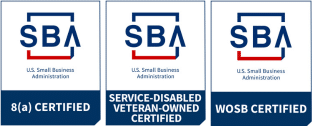Imagine the first organic website result on Google… how did they do it? We’ve already discussed the ins and outs of Pay-Per-Click (PPC) advertising in search engine marketing (SEM), now for a crash course in Search Engine Optimization (SEO). SEO is the process of organically increasing your website’s ranking on a search engine results page (SERPs). SEO generally includes three main subcategories: User Interaction Signals, on-page SEO, and off-page SEO. Search Engine Optimization and Pay-Per-Click are components of Search Engine Marketing, and striking a balance between the two methods is essential for consistent traffic and, most importantly, growth. Companies cannot pay to have a high organic search rank; instead, bots mine through websites and organize the information found into an index. An index is like a massive filing cabinet that allows an algorithm to pull out the most relevant information. Every search engine has its own algorithm that sifts through the index with its own criteria and weights for organizing information that determines what is listed on SERPs.
Search engines keep track of user interaction signals to measure how helpful your website was for answering a query. Your ranking will drop if your page has a consistently high bounce rate. Bounce rate estimates how many visitors leave a page without clicking on a link, filling out a form, or making a purchase. When visitors take action on your page, it is called a conversion, and your site’s conversion rate increases. Average bounce rates can vary depending on the type of page in question. Find out if your website has a high bounce rate. There may be a problem with your content, page layout, or user accessibility.
Next, we have on-page optimization. On-page SEO includes the parts of the website directly controlled by the owner; keywords, title tags, and meta descriptions. There is not a uniform process for on-page SEO. Instead, there are general areas to keep in mind including, content, site architecture, and HTML, which is beyond the scope of this blog. Quality content that loads quickly is key to high conversion rates. It is essential to keep any image and graphics element small. The page will load faster, and your website should be optimized for mobile use. Title tags should include keywords and help guide visitors to the most critical parts of the site. Optimizing site architecture focuses on making the interface clean and navigable for the user and quick for bots to crawl through. Site architecture SEO can start with having a simple URL; keep URLs under 128 characters if possible, avoid having session IDs in URLs, use hyphens to join words, and make them all lowercase. Most of the site architecture SEO is done with the initial creation of the webpage. It should be given lots of attention when the website is first created because retroactively optimizing it is often much more work than if the proper steps were taken initially. Utilizing a sitemap is key to site architecture SEO. Google recommends using XML sitemaps and even provides information on building sitemaps.
Off-page optimization includes aspects of a page that are not necessarily in direct control of the publisher. Off-page SEO is concerned with the validity and authority by looking at a site’s reputation, links, and user information. Having a high conversion rate increases your site’s reputation, but the number of backlinks also contributes to prominence. A backlink refers to when another website references and links back to your page. Academic articles will usually have several backlinks but don’t consistently rank the highest due to the accessibility of the content. A website with fewer backlinks and less authority may rank higher than scholarly journals because it presents information in a more usable, digestible manner concerned with on-page SEO. The last general category taken into consideration in off-page SEO is the user’s data, such as their current location, to help give the most accurate results for a query.
SEO is a time-consuming process but is the foundation for online marketing schemes and is worth putting in the front-end investment. It can also be costly to keep up with content creation, email outreach, and constant keyword research. Still, once publishers have a good handle on SEO, it can generate a ton of traffic onto the site. Third parties are often required to handle SEO considering the level of web development and computer science needed for site architecture and other technical aspects of SEO, so why not add The Miner Agency to your list. Check out The Miner Agency’s creative services to see how we can help your websites find their spot on the front page!
